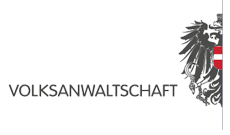TV ACCESS FOR THE VISUALLY AND HEARING IMPAIRED
Both the hearing and the visually impaired regularly complain to the AOB that only a small part of the public television programme of the Austrian Public Broadcasting ORF is accessible to them although they must pay the full amount of radio/TV licence fees.
The Austrian Association of the Blind and Visually Impaired turned to the AOB, as basically only one television show per week is accessible to the 318,000 visually impaired in Austria. According to surveys, TV is the primary information and entertainment medium for the majority of the blind and visually impaired. The radio is no replacement for television. The Association of the Blind and Visually Impaired demands that a binding audio description be enshrined in the law within the scope of the public service mission of the Austrian Public Broadcasting ORF. Additionally all films financed or partially financed by state funds should be made available as audio films.
The State Secretary for Media emphasised that ORF has recently substantially expanded its broadcasts for the hearing and visually impaired. About 370 hours of television per month are currently subtitled. The number of broadcasting minutes with signing is currently 760 and has been increased ten-fold since 2003. Starting recently, the news programme "Zeit im Bild" has been accompanied by sign language. Furthermore transmissions of debates from Parliament will be subtitled in the future.
The question of barrier-free access to ORF programmes was also the subject of a parliamentary enquiry in September 2009. During this enquiry, a number of experts evaluated the ORF broadcasts for the hearing and visually impaired as still inadequate. With a 30% rate of subtitling, Austria occupies the second to last place in Europe. Only Albania has even poorer broadcasts for the hearing and visually impaired. In comparison, Great Britain and Ireland already have 100% of their programming subtitled, while the figure is 60% in Belgium, Sweden and France.
The current draft of an amendment of the ORF Act provides for a gradual binding annual increase in the percentage of the ORF broadcasts for the hearing and visually impaired. However, this is not sufficient for the persons affected. They are specifically demanding a concrete and binding step-by-step plan with audio description of all broadcasts as part of the public service core mission by 2020 at the latest. In his comment to the draft law, the Ombudsperson for the Disabled pointed to the agreement concluded at the end of 2009, according to which the percentage of subtitled broadcasts will be increased from currently 33% to 45% in 2010 and to 55% in 2011. Moreover, the audio description will be increased both for the ORF’s own productions and co-productions.
The AOB welcomes the endeavours and measures undertaken thus far to improve the barrier freedom of the ORF broadcasts. However, these measures must be urgently intensified. This is the only way to comply with the legal obligations under the UN Convention on the Rights of Persons with Disabilities, which Austria has ratified.
The AOB aims at offering a barrier-free access to its weekly TV broadcast and is currently in contact with ORF to clarify the next steps in this direction.
